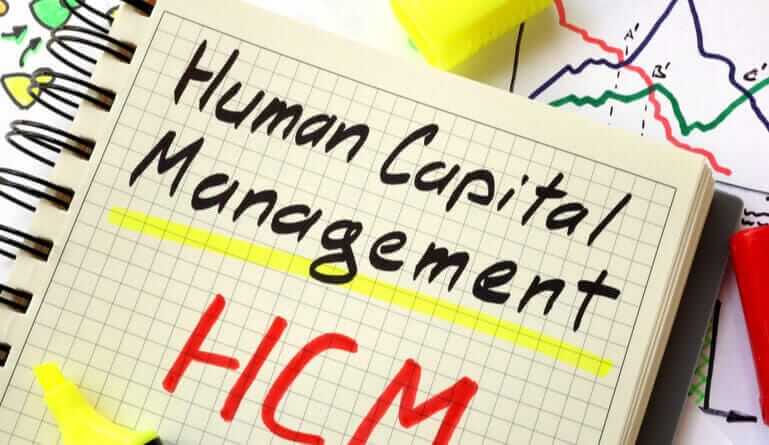Many organizations experience the challenge of managing human capital along with other business aspects. As companies grow, develop, and recruit more employees, this issue gets to be more difficult.
However, with the innovative HCM solutions of today, human capital management does not have to be as unnerving or overwhelming as it was back then. Business owners do not need to struggle with this issue anymore as they can go about it by utilizing the techniques and guidelines that come along with HCM solutions.
HCM is fundamental in the successful run of a business’s operations. The history of human capital management shows that this is a set of comprehensive practices for a company for the recruitment, management, development, and optimization of employees to maximize its business value.
Employees are the most valuable assets of a company. Thus, hiring managers to strategize on developing policies which enhance employee experience thereby enabling them to retain their employees. According to research, a significant percentage of hiring managers experience the challenge of attracting and retaining talent, that is their most valuable employee.
Hence, the reason most opt to employ HCM solutions in their companies. But, before we dig deeper into how the human capital management system functions, its importance, and challenges, we first need to understand what it is. And, this article seeks to elaborate much on that.
- Human Capital Management Definition
- What Are the Problems of Human Capital Management?
- Human Capital Management Solutions
- Benefits of HCM
- Major Components
- Ways to Increase Human Capital Management
- Features
- HCM Strategies
- HCM Software
- HCM Functions
- Difference between HCM vs HRM
- Future
- Upcoming HCM Trends
What is Human Capital Management?
The human capital management definition states that this is the process of employing, procuring, and developing organizational employees in an effective manner. The process undergoes strategic and tactical procedures, applications, and practices to capitalize on the economic value of a company.
HCM is also the backbone of a flourishing business that helps in managing the most expedient assets of a business; people. It incorporates onboarding, performance management, and budgeting.
(Also Read: Why Human Capital Management is important? )
Human Capital Management Problems
Even though human capital is the backbone of a business, there are problems that can render it a liability for a business. The problems include:
- Poor performance management – performance management is crucial to the success of any business. Poor performance management often happens when employees do not share a purpose and management is lacking in its adoption of strategies to enhance performance. This is a major problem that can render human capital a big liability to a business.
- Poor use of employees’ analytics – workforce analysis is an essential factor in the success of an organization. Through the analysis of one’s employees, it becomes easier to monitor and invest in areas of waning potential. However, the poor use of employees’ analytics can lead to problems.
- Lack of proper handling of organizational change – it is crucial to anticipate organizational change and make proper arrangements. HCM has to consider the future and anticipate changes. Staying up-to-date is key in ensuring HCM mismanagement never happens.
- Lack of strategic workforce planning – HCM needs to ensure that it has eyes on everything within a business. Strategic planning means that there are people who anticipate problems and thus prepare contingency plans. HCM has to stay in anticipation of changes and challenges in the industry.
- The cost of unsolved issues and challenges – every challenge or issue, no matter how small, needs to find the HCM with plans to counter. Leaving issues unsolved could lead to more problems ahead. Therefore, it is crucial that HCM considers the bigger picture at all times to avoid small problems that eventually become challenging to solve.
Resolving HCM Problems
For a successful run of the HCM, the management of a business needs to manufacture solutions to the challenges of human capital management above. In this article, we highlight some of the obvious solutions that businesses can use.
- Developing contingency plans – contingency plans help ensure that a business prepares for problems it anticipates could happen.
- Proper use of workforce analytics – proper use of workforce analytics can help reveal specific areas that need tweaking.
- Introduction of strategic planning in running the business – strategic planning means a business knows what it is doing and is ready for any problems that can ensue.
- Proper handling of organizational change – to avoid instances of resistance and backlash because of organizational change, HCM needs to proper handling of organizational change.
Benefits of Human Capital Management
- Find the best places for workers that can lead to the complete utilization of their skills.
- It helps to extract the best out of employees.
- Promotes the flow of information in the workplace.
- Leads to employee growth through training and development.
(Also Read: Top Benefits of Human Capital Management to Know)
Components of Human Capital Management
- Recruiting or hiring – involves the process of finding the right people that fit within the principles of the company.
- Career development – this involves the enhancement of the employees’ careers.
- Mentoring of employees – this involves offering guidance and advice to employees on aspects of their personal lives as well as work.
- Motivating employees – this is giving employees the mental edge that drives them or helps them to keep working hard and attaining their goals as well as the company’s goals.
- Development of performance management strategies – this component involves the development of strategies that help monitor the performance of employees as well as find ways to make them better.
Ways for Organizations to Increase HCM
To increase HCM, organizations need to do the following:
- Have more employee training and development sessions.
- Consistently monitor employee performance.
- Encourage direct communication.
- Have clear roles or define roles.
- Motivate employees.
Features to look for in an HCM Solution
The features to look for in an HCM solution include:
- Integration – is the solution capable of communicating with other systems?
- Presence of single-user records.
- Is the solution cloud-based?
- Reliability of customer support.
Best Human Capital Management Strategies
Besides the tools of managing primary functions of human capital management such as time and attendance, payroll, and benefits, today, this HR software addresses integral workforce management necessities including;
- The hiring of new employees.
- Cross-company collaboration. Working together with other organizations to achieve their goals.
- Talent management. Enhancing employee experiences to retain employees.
- Skills development efforts. Employ training and development efforts to enhance the performance and self-fulfillment of organizational employees through educational means and programs.
Pioneering HR management software features are even relying on advanced analytics and AI to provide engagement and productivity acumens. With the vast range of options, the HCM software tends to be overwhelming. Hence, there is potential for organizations to purchase the wrong products or to overspend and overcommit.
The human capital management software depends on human proficiency to construct, forecast, and implement strategies or tactics which will create and manage effective workforce output.
HCM software
HCM software systematizes the benefits plans, real-time eligibility tracking, benefits enrollment process, premium tracking, and career track. So, in case you are wondering and asking, “How can employees’ motivation support improve human capital management performance?” you need not wonder anymore.
Through training, coaching, addressing deficient performance behaviors, appraisals, and rewarding the achievement of specific goals and objectives, companies can manage the performance of their employees thereby improving HCM performance.
(Download: Buying Guide on HCM Software)
Functions of Human Capital Management
HCM plays an integral role in organizations. So, if you are wondering why human capital management is important, below are the functions of this essential arm of organizational management.
- Hiring – this involves the recruitment of new talent.
- Managing – this is control or exercising power over the organization’s components of management.
- Training – Training is helping the workforce attain the highest competency levels.
- Ensuring the retention of talent – after hiring, it is also the work of HCM to ensure that this talent remains at the organization.
- Applicant tracking – applicant tracking involves tracing applicants’ data during the recruitment or hiring process.
- Employee onboarding – this involves the integration of new employees into an organization’s culture.
- HR management solutions – HCM also offers HR management solutions. This can involve dealing with employee issues to offering guidance on matters that could bring some sort of friction between management and employees.
- Benefits administration – HCM also administers benefits. This involves the creation and management of benefits programs as well as enrolling new employees in the program.
- Time and attendance tracking – HCM are responsible for tracking the time and attendance of employees every day. In some organizations, this determine payment.
- Payroll and tax filing – HCM also does payroll and tax filing for its employees. Since it is the arm that deals with benefits, it is also the arm that ensures all employees receive their salaries and that each is paying their taxes.
- Performance management – since it is the arm of an organization that deals with employees’ issues, HCM also ensures that it tracks and monitors the performance of all employees.
- ACA compliance – ACA deals with risk management. It is, therefore, the work of HCM to ensure that an organization complies with the risk management precepts.
- COBRA benefits administration – it is also the work of HCM to administer COBRA benefits to former employees after a job loss.
- Pay cards – it is also the responsibility of HCM to issue employees with pay cards. These work like debit cards and work for a particular pay period.
- Employee verification – it is also the work of HCM to issue employee verification letters to the employees. This confirms their status as being part of a particular organization.
Human Capital Management Vs Human Resource Management
As aforementioned, HCM, human capital management is the process of acquiring, employing, and developing the employees of an organization in an effective manner through tactical and strategic applications, practices, and processes to boost the economic value of a business.
HRM, on the other hand, is a system that encompasses elements of the HRIS (Human Resource Information Systems) that focus on time, core payroll, and labor.
HCM describes functions that are a fundamental part of the strategic human capital management in a company from applicant tracking and talent to analytics, time, and attendance. Additionally, it incorporates performance management, onboarding, and budgeting.
HRM comprises HRIS elements and features that concentrate on core payroll. Also, it includes technology systems that organizations use to manage HR functions, for instance, management reporting, benefits administration, and employee self-service.
Future of Human Capital Management
- The future of HCM should expect global growth.
- Enhancement of analytics especially in job assessment and the hiring process.
- Increase in hire-as-needed tendencies.
- An increase in the aging workforce.
- Enhancement of the need for life-work balance.
Human Capital Management Trends 2020
- Flexible working environments – more people will be working from either their homes or anywhere in the world other than their offices.
- Shift to the gig economy – more employees will be working on contract or short-term engagements. People will be working for a short period and then take their services elsewhere.
- Contractual work to increase – this works the same as the shift to the gig economy. Permanent workers will reduce as more contractual workers emerge.
- Increase in the use of the English language in global business – English will continue to dominate in the business work as more people will be using it.
- Increase in the use of HR chatbots – AI continues to increase its influence insignificant aspects of organizational functions. In 2020, HR chatbots will be in great use as HR seeks to interact with more people.
- Gamification – Gamification is a trend that will seek to enhance engagement, participation, as well as loyalty either among employees or clients of an organization.
Conclusion
Several companies encounter the difficulty of managing human capital together with other business aspects. As organizations continue to grow, develop, and hire more people, this problem gets out of hand. However, today, solutions are all over and organizations can sort their issues fast.
Furthermore, it is crucial that organizations remain adaptable. Change happens fast, but only those who prepare beforehand get to reap the benefits. So, organizations need to make use of strategic planning teams and stay ahead of the changing business environment. Basing one’s thoughts on the above guide, the answer to the question “Is human capital management always capitalized,” is a resounding yes.
***
Kenny Gill is a senior advisor and writer in the department of CustomEssayOrder. He is familiar with corporate events, sports, education. He is responsible for supporting internal communications needs for specific business functions, as well as writing, creating and editing various quality content. He performs a leading role in developing and creating good content, chiefly for different types of audiences. His professional Essay Writing Service is one of the best in this niche
Other Useful Resources:
Top 6 Human Capital Management Principles
Human Capital Management Is Critical to Every Organization – Here’s Why
6 Future Trends of Human Capital Management (HCM)
Why Human Capital Management Is Important in SAP
4 Challenges of Cloud-Based Human Capital Management Technology





